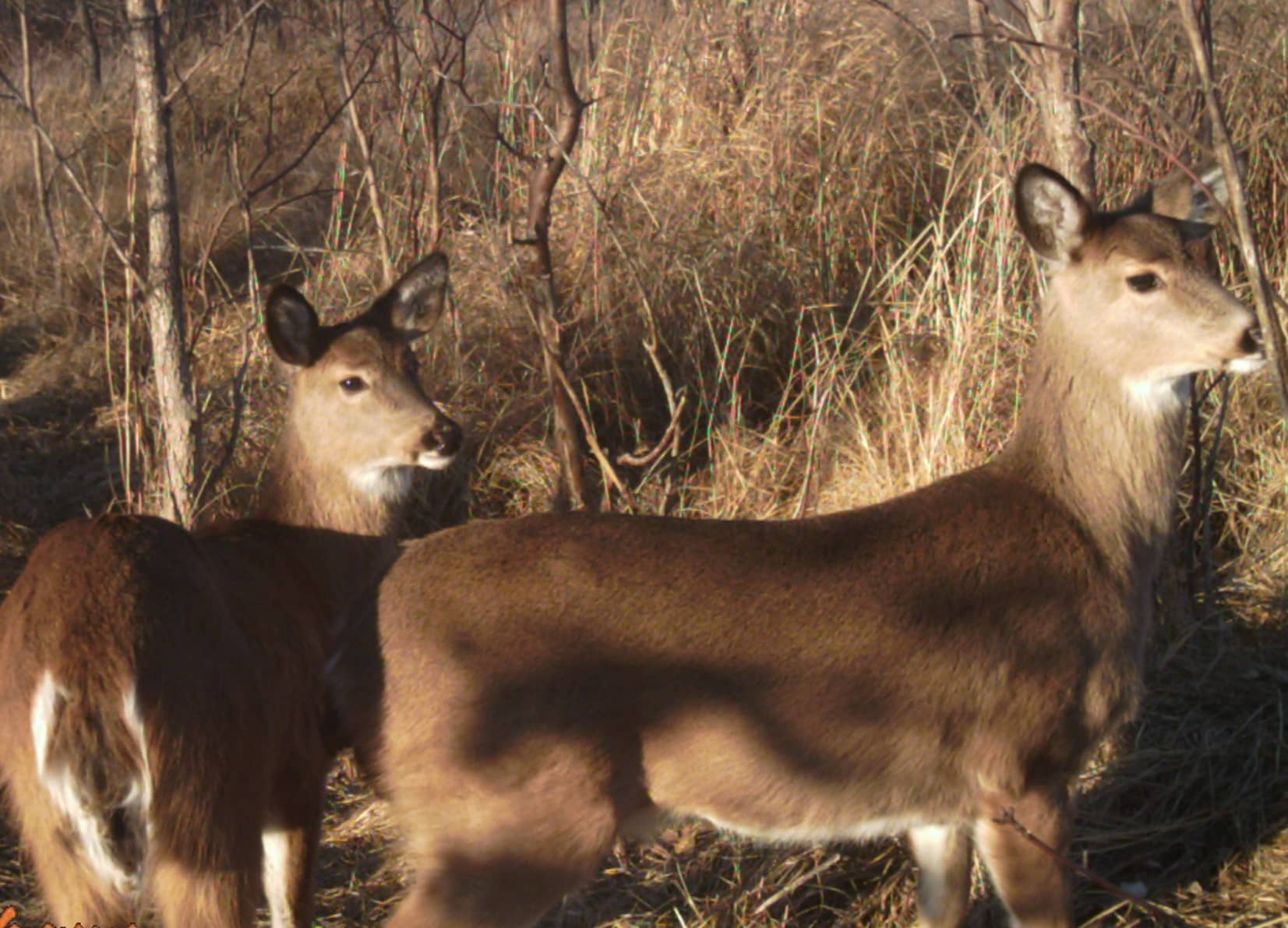
EHD primarily impacts whitetail deer populations, predominantly those found south and west of the Missouri River in North Dakota. Simonson Photo.
By Nick Simonson
Reports throughout southwestern North Dakota of dead and dying whitetail deer discovered on the landscape – but particularly related to drainages and low water areas – are likely the result of an increase in a viral infection particular to the animals. Epizootic Hemorrhagic Disease (EHD) is a virus carried by biting midges, which at this time in the season are predominantly found around sloughs, stock ponds and other damp areas. EHD causes dehydration and a fever, which may result in sick deer seeking water sources.
Additional symptoms of the infection include respiratory issues, swelling of the neck and head, indifference to humans and ultimately, hemorrhaging which results in death.
Dr. Charlie Bahnson, D.V.M., Wildlife Veterinarian for the North Dakota Game & Fish Department (NDG&F) cautions the public that the recent increase in reports of dead and dying deer are most likely the result of EHD, and not Chronic Wasting Disease (CWD), which is a prion-based neurological disease that has captured headlines with its spread in the state and across North America.
“Unfortunately, I think people confuse EHD with CWD, but CWD is this more subtle thing that grows, you don’t see five deer that all died at once in a drainage like that, it’s more of a slow, subversive thing,” Bahnson explains, continuing, “EHD can have dramatic effects in a single year like this, it can be that in a bad year, you’ll go into a drainage and find a number of deer that are dead, but fortunately the population does rebound with time, you get the immunity built up in the population and it’s good to go for a couple of years, so it’s this cyclical thing that happens.”
As summer progresses into fall, it takes time for enough of the biting midges to develop and start feeding off their host and there’s also the viral component as well, and that too must develop over the season in order to cause heightened die-offs of deer. When the two elements of virus and vector come together, that’s when people begin to observe more sick and dying deer on the landscape. There’s debates as to why some years are worse, according to Bahnson, and factors can vary widely. 2012 was a notably bad year for the prevalence of EHD throughout the country and North Dakota.
There’s a lot of complicated factors, including prevalence of water, development of midges, exposure to the virus in limited levels and the development of herd immunity, and the absence of that immunity in populations that may not have been exposed to the virus in recent years.
“Down in those counties where we’ve got it right now, we’ve had a number of years where we’ve had little to no hemorrhagic disease and so we really have a naïve population with a lot of animals that have never been exposed, so it sets itself up for an outbreak like this,” Bahnson relates, “it tends to only be in whitetails and then this time of year, given the fact that we’ve been getting reports across that particular [southwestern] region is all strongly suggestive of the fact that’s what’s going on and a lot of the time people will report they were here yesterday, and today they’re here, and there’s a deer that’s almost dead or dead, so it’s really super-fast acting; the deer tend to have a really good healthy condition, and then it’s almost like they drop over dead,” he concludes.
According to the NDG&F, the prevalence of deer deaths from EHD tends to decline after the first hard frost, as the cold weather kills the biting midges which transmit the virus.
For more information on EHD and other wildlife diseases, their symptoms, and effects on the herd, visit gf.nd.gov/wildlife/diseases.
